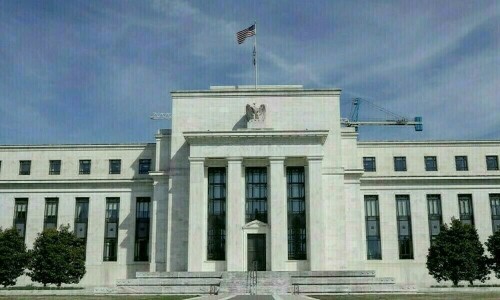US Federal Reserve Expected to Maintain Rate Pause Amid Economic Uncertainty
The US Federal Reserve is generally anticipated to prolong its pause on interest rate reductions this Wednesday as it navigates the unpredictable economic landscape shaped by President Donald Trump’s fluctuating tariff policies.
The central bank confirmed in a statement that the second day of discussions by the Fed’s monetary policy committee commenced in Washington at 9:00 am local time (1300 GMT), as scheduled. The committee’s decision will be released in the afternoon, followed by a press briefing by Fed Chairman Jerome Powell.
Since the beginning of his term, the Trump administration has amplified tariffs on significant trade partners such as Canada, China, and Mexico, only to later retract some of these measures. Furthermore, threats of reciprocal tariffs on other nations have unsettled US financial markets.
Numerous analysts are concerned that Trump’s tariff actions, reductions in civil service positions, and immigration proposals could potentially elevate inflation and impede economic expansion. These factors may complicate the Federal Reserve’s objectives to lower inflation to its established target of two percent while sustaining a robust employment sector.
It is projected that Fed decision-makers will likely maintain stable interest rates, fluctuating between 4.25 and 4.50 percent, signaling a cautious approach pending greater clarity on the economic consequences of the administration’s strategies.
Former Boston Fed President Eric Rosengren stated, “There won’t be any adjustments to the interest rate, and there is a valid rationale.”
He further commented, “The extent and duration of the tariffs remain considerably uncertain. Assessing the definitive impact on inflation or unemployment is challenging until a clearer perspective emerges.”
Elevated Economic Concerns as US Fed Initiates Rate Meeting
Additionally, members of the Fed’s rate-setting committee are slated to release revised economic projections. Several analysts foresee that trade uncertainties may prompt a slight increase in their inflation forecasts and a downgrade in economic growth expectations.
White House National Economic Council Director Kevin Hassett remarked, “A key consideration for the Fed is determining the transition from stricter monetary policies to a more stable approach.”
He added, “My expectation is that this shift will transpire over the upcoming sessions.”
Slowing Economy
Recent economic indicators had previously portrayed a reasonably resilient American economy, with the Fed’s preferred inflation gauge indicating a 2.5 percent increase through January, exceeding the target but significantly reduced from its peak in 2022.
Throughout 2024, the economic expansion remained comparatively vigorous, and the job market demonstrated considerable strength, characterized by encouraging levels of job creation and an unemployment rate near record lows.
However, sentiment has evolved since Trump’s return to the White House, with inflation expectations on the rise and financial markets experiencing turbulence due to the intermittent implementation of tariffs.
Fed Chairman Jerome Powell remarked that remaining patient and awaiting further clarity is the best course of action, referencing the ambiguity surrounding the effects of Trump’s economic initiatives.
‘Disaster’
Although Fed officials have generally refrained from direct criticism of the administration, some analysts have expressed less inhibited viewpoints.
Michael Strain, the director of economic policy studies at the American Enterprise Institute, characterized US President Donald Trump’s economic policy management as a disaster.
In their December economic forecast, Fed policymakers had initially anticipated two quarter-point rate cuts for the current year.
Amid trade uncertainties, economists at Barclays have suggested that policymakers may reduce this to a single cut this year.
Nationwide chief economist Kathy Bostjancic noted that Fed officials aim to avoid overreacting, adding that she anticipates the Fed to project two cuts in their forecasts but ultimately implement only one.
She concluded that significant uncertainty persists, expressing hope for enhanced clarity regarding the US economy following the planned implementation of Trump’s retaliatory tariffs on April 2.



Comments (0)
No comments yet. Be the first to comment!
Leave a Comment